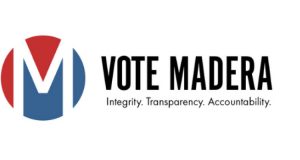MADERA COUNTY – Finding a panel of 20 citizens who are able to commit to a trial anticipated to last anywhere from three to six months is no easy task.
Kenneth Jackson, 40, and Allison Waterman, 47, have been in custody awaiting trial in connection with a series of suspected arson fires in the Coarsegold area since late June, 2013.
Nothing about this trial has moved quickly, due to the complexity of the evidence and the number of charges, the defendants’ waiver of time, along with scheduling challenges in Department 2.
The preliminary hearing lasted eight weeks, and the jury selection process, which began in the week before Christmas, continues in Madera Superior Court this week, as Judge Dale Blea seeks to empanel a jury of 12, along with 8 alternates.
Jackson is charged with 31 counts of arson, 1 count of conspiracy, resisting arrest and assault on a police officer. Waterman is charged with 10 counts of arson and 1 count of conspiracy.
Now all parties involved are going through the process of empaneling a jury, which in this case, is a daunting task.
There are several ways a potential juror can be dismissed from service. The first to be dealt with is hardship. Showing that sitting on a jury for this length of time will cause them financial hardship is one example. For those who cannot demonstrate that they will suffer hardship by serving, the next step is voir dire.
The process of voir dire allows the judge and the attorneys the opportunity to talk to the potential jurors, go over the 20-page questionnaire they have all filled out, and determine if any potential juror is biased or is judged to be unable to deal with the issues fairly. They are questioned about such things as their knowledge of the facts of the case, whether or not they are acquainted with the defendants, witnesses or attorneys, and if their occupation might lead to bias.
The attorneys can then ask that a juror be dismissed, without giving a reason, in what is called a peremptory challenge. The prosecution is allowed 20 of these peremptory challenges in this case, and the defense is allowed 10 jointly, and 5 individually for each defendant.
A potential juror can also be stricken “for cause.” Unlike the peremptory challenge, attorneys must state their reason for requesting the removal of the juror, showing that they appear incapable of rendering a fair and impartial verdict based on such things as an obvious prejudice, mental instability, acquaintance with the defendant, attorneys or witnesses, or a stated bias. The judge then determines if the person shall be dismissed.
In this case, Judge Blea is seating eight alternate jurors in anticipation of possible attrition in the jury panel during the long trial.
All parties hope to complete the process by the end of the week and move forward with opening statements and testimony.


